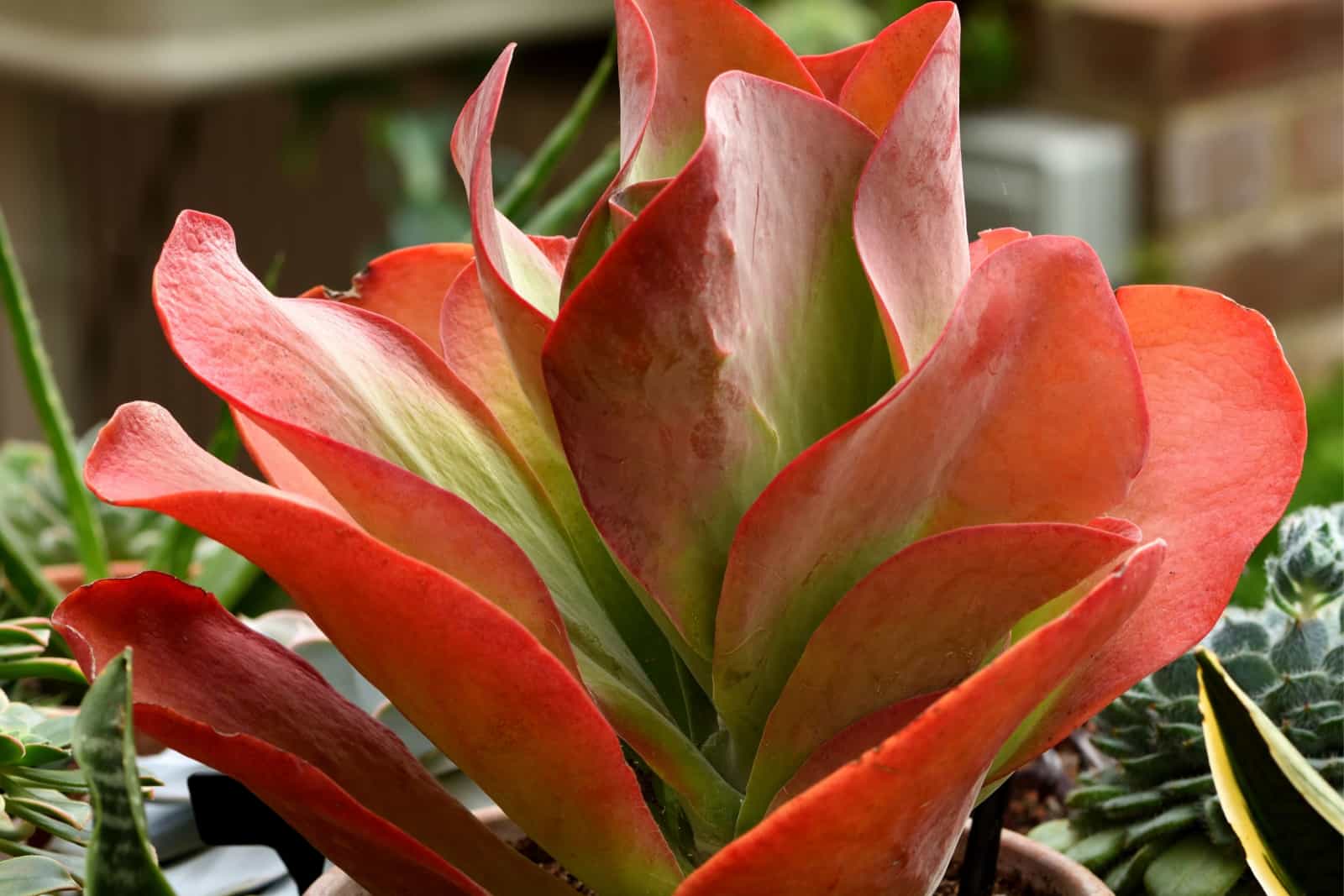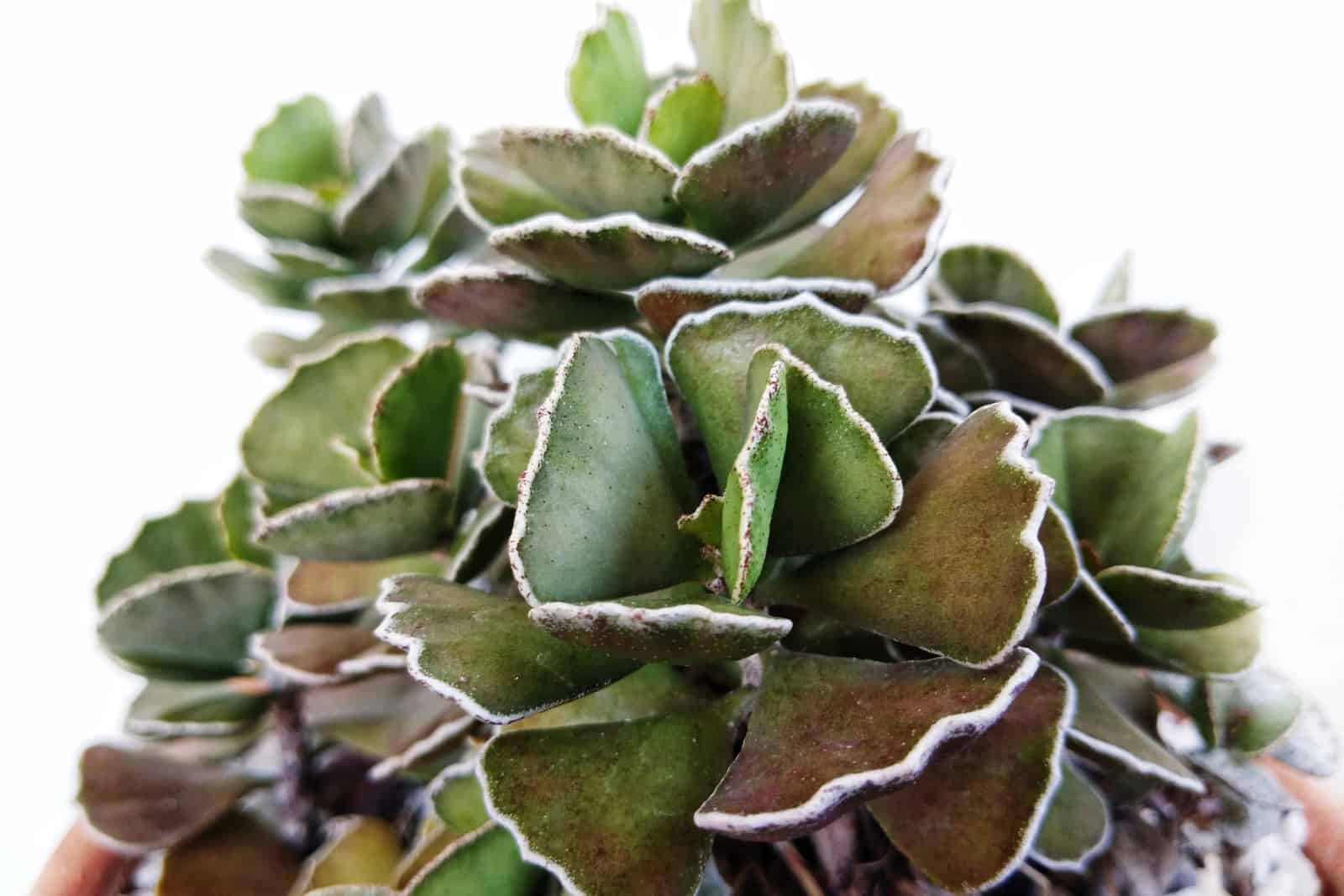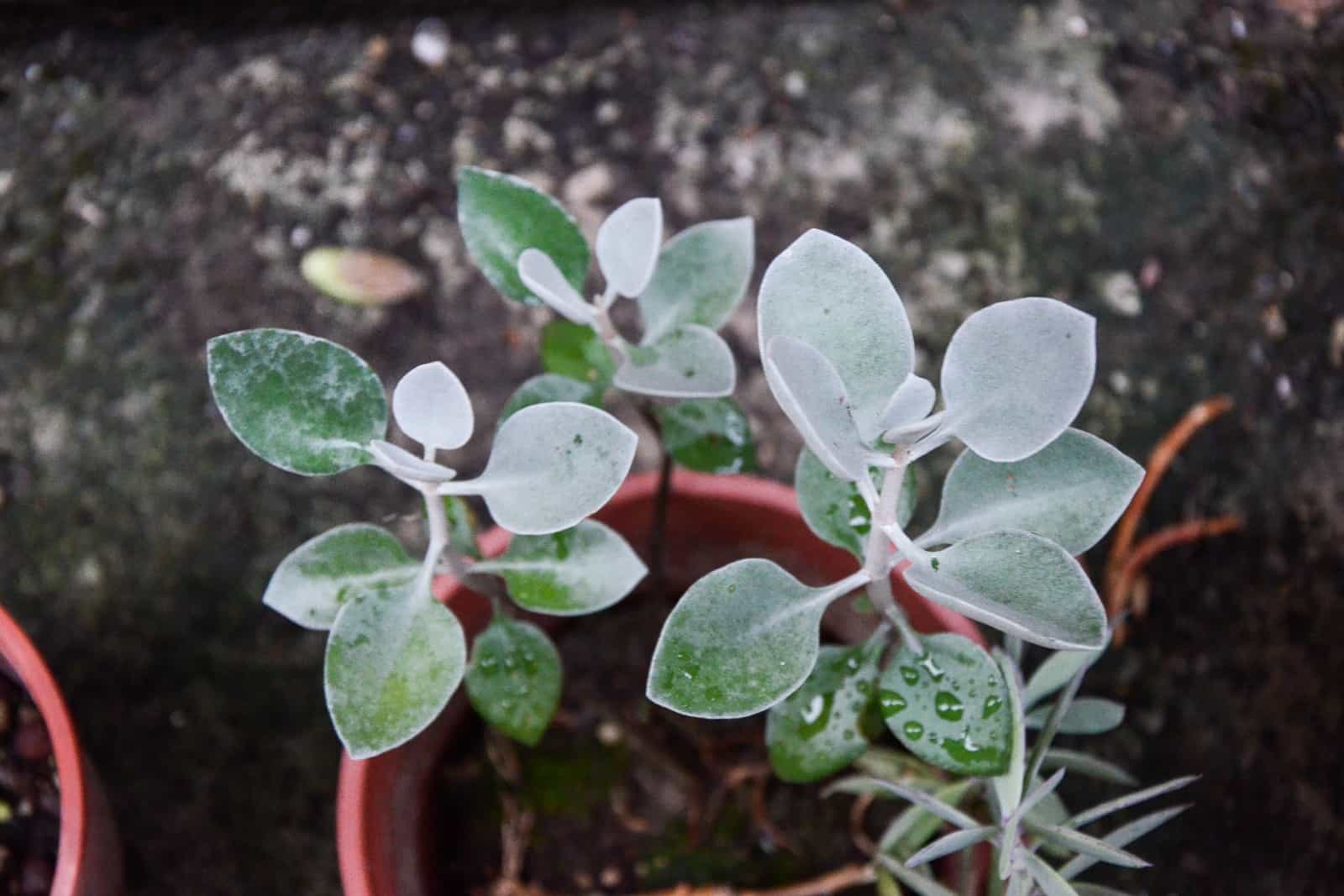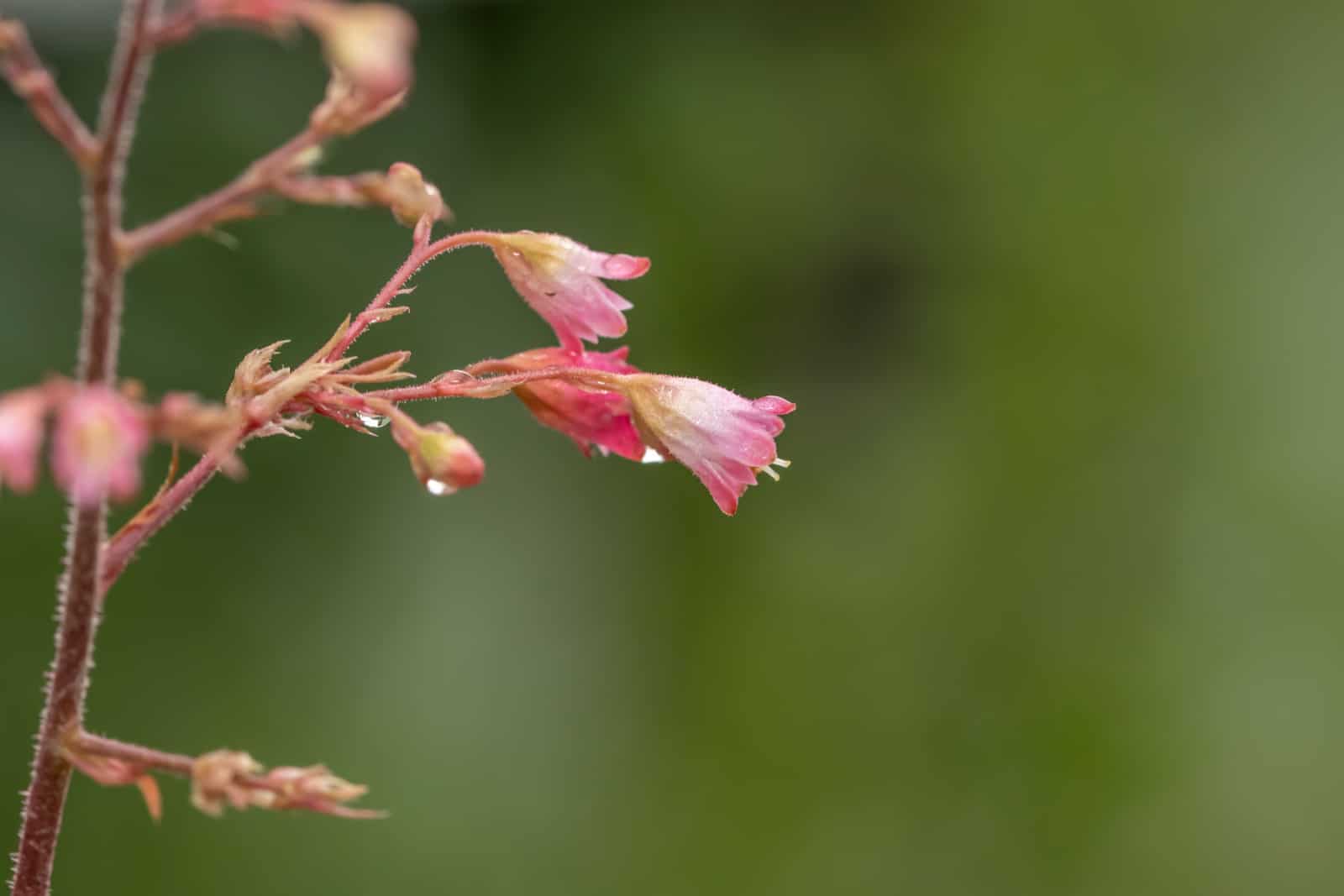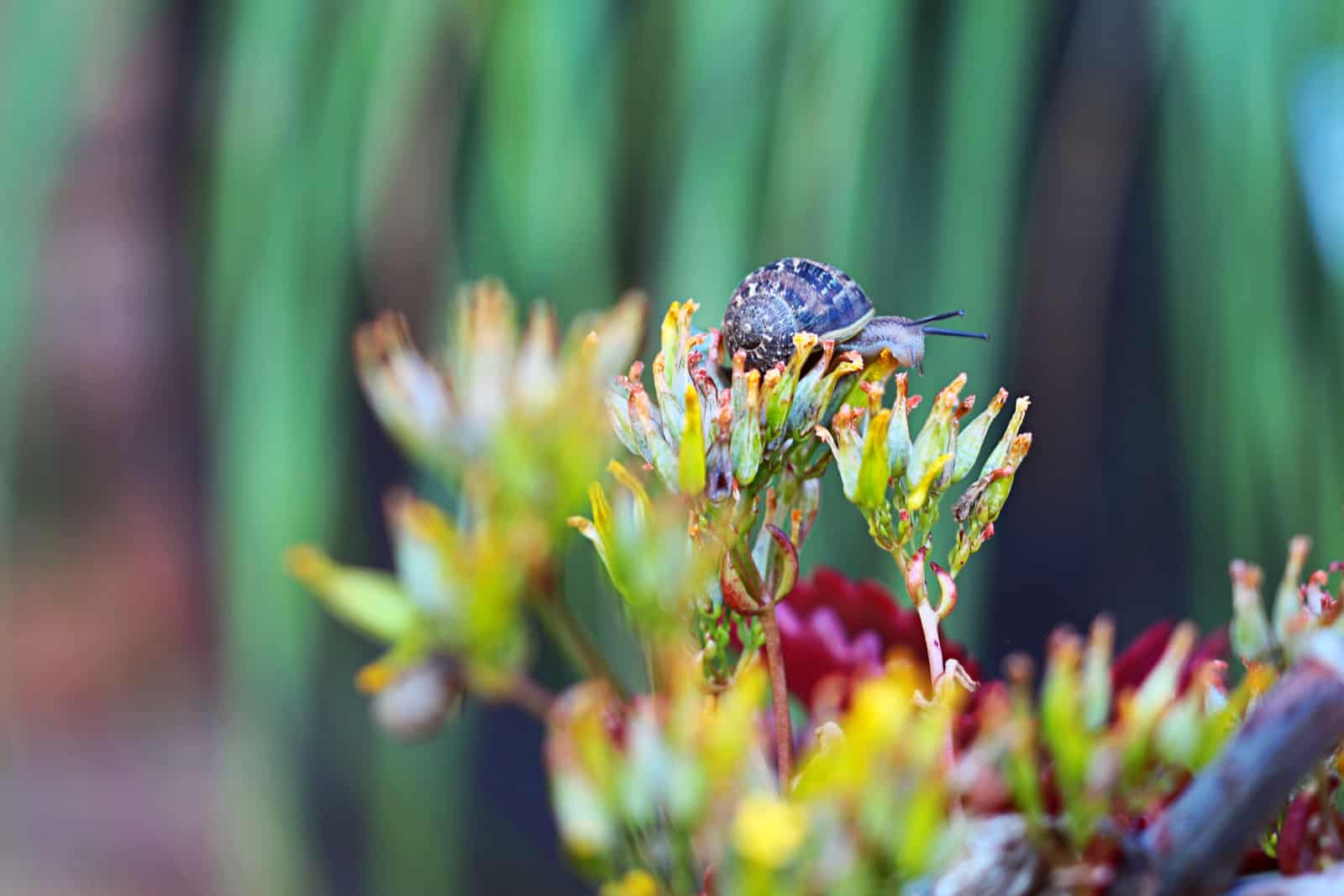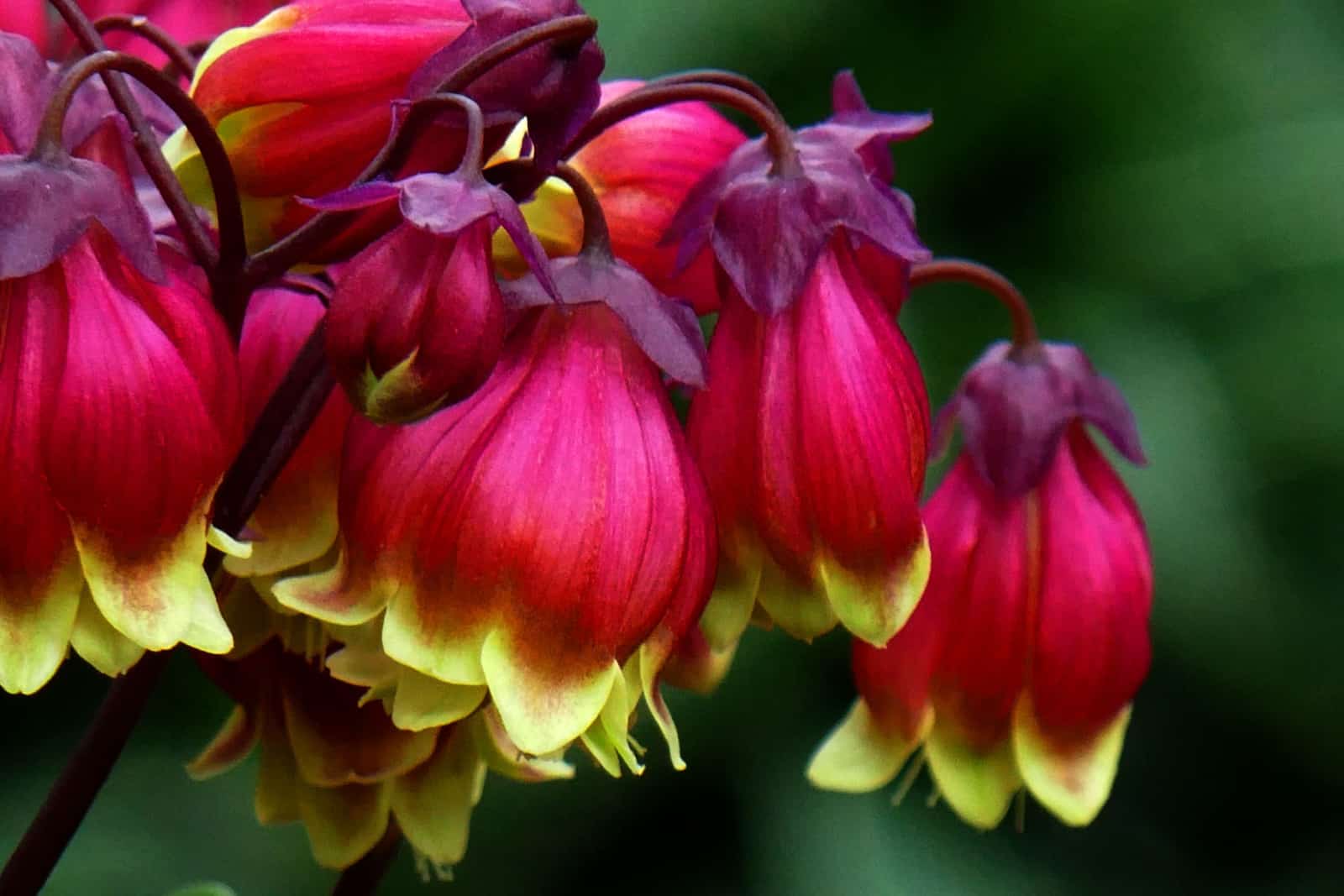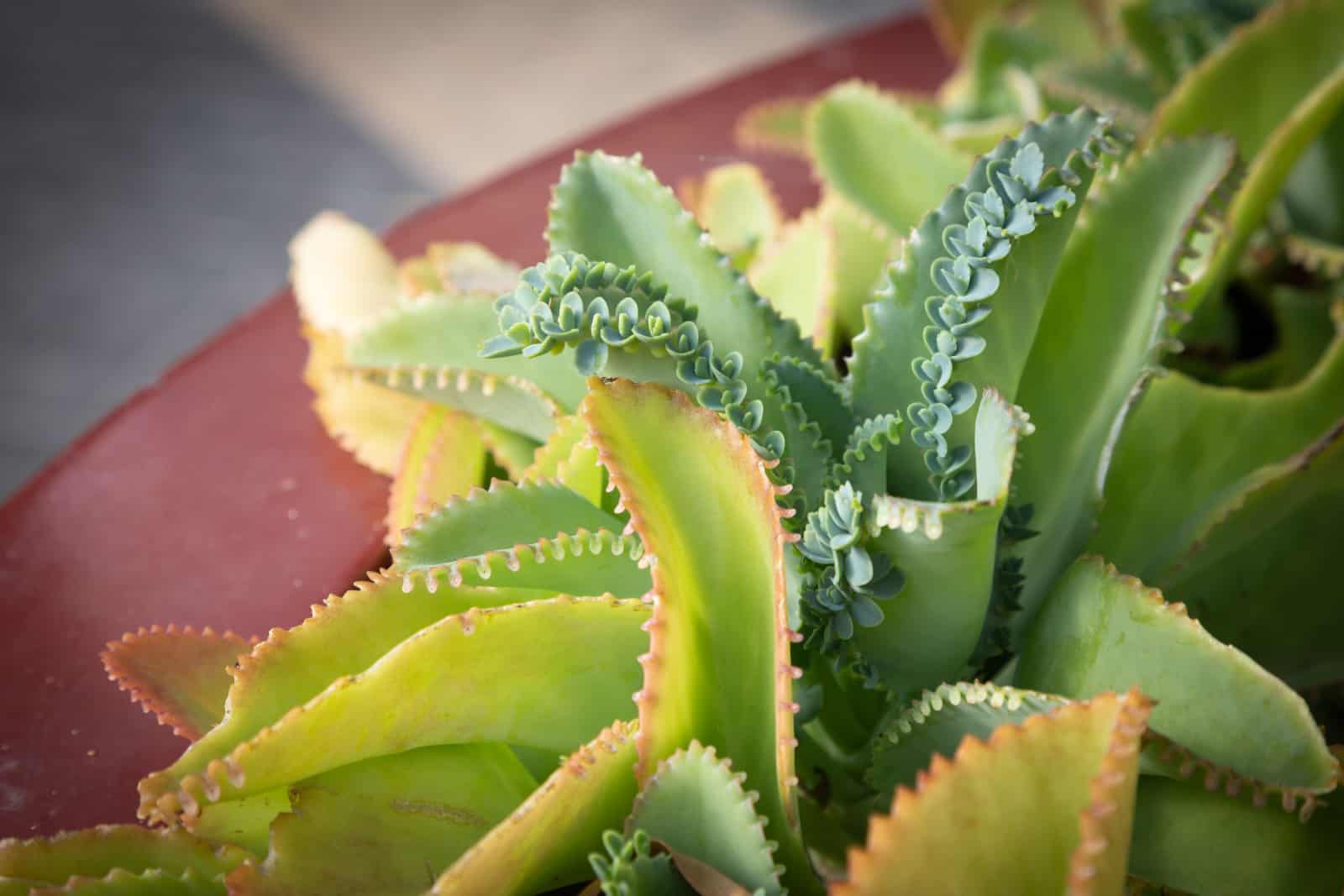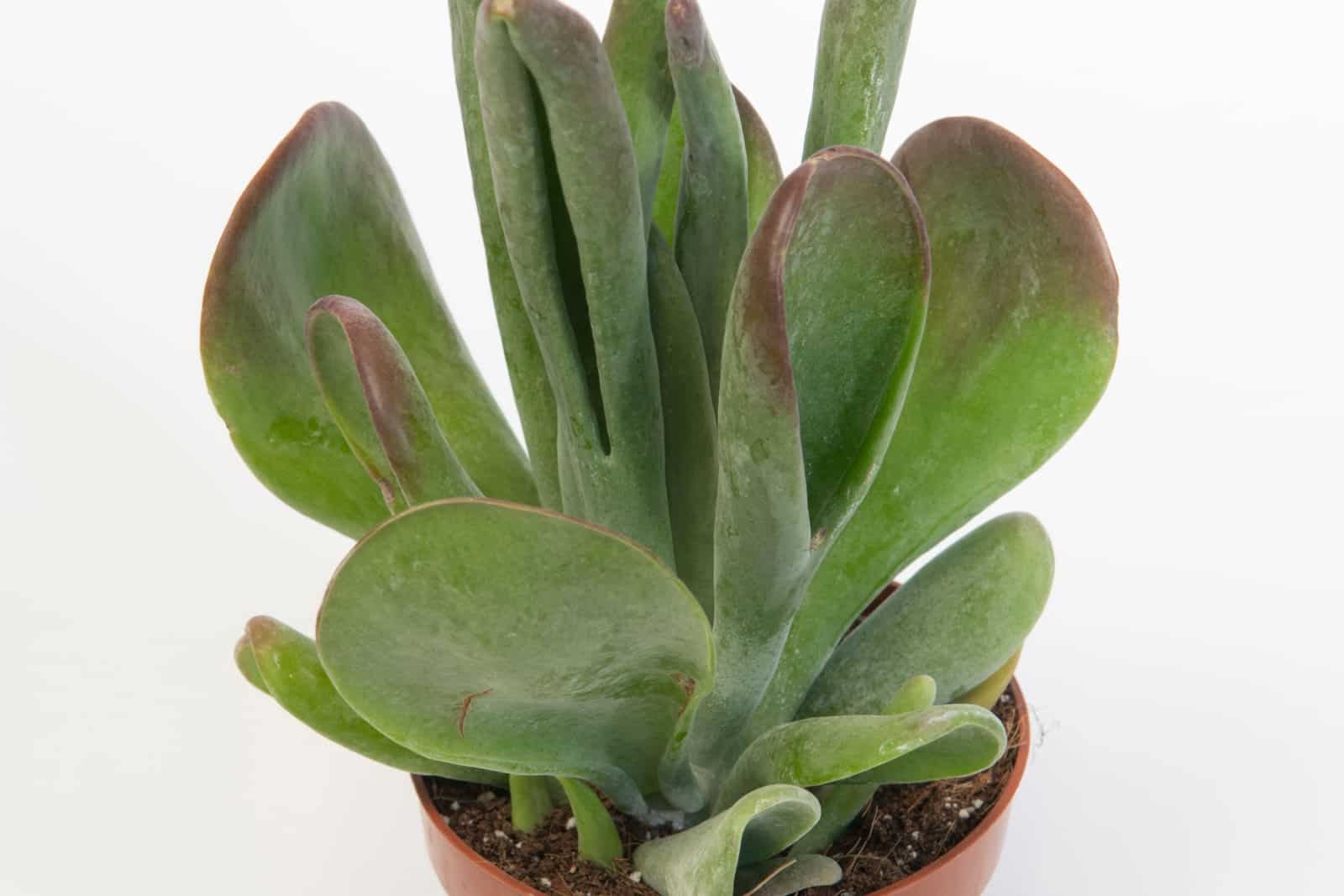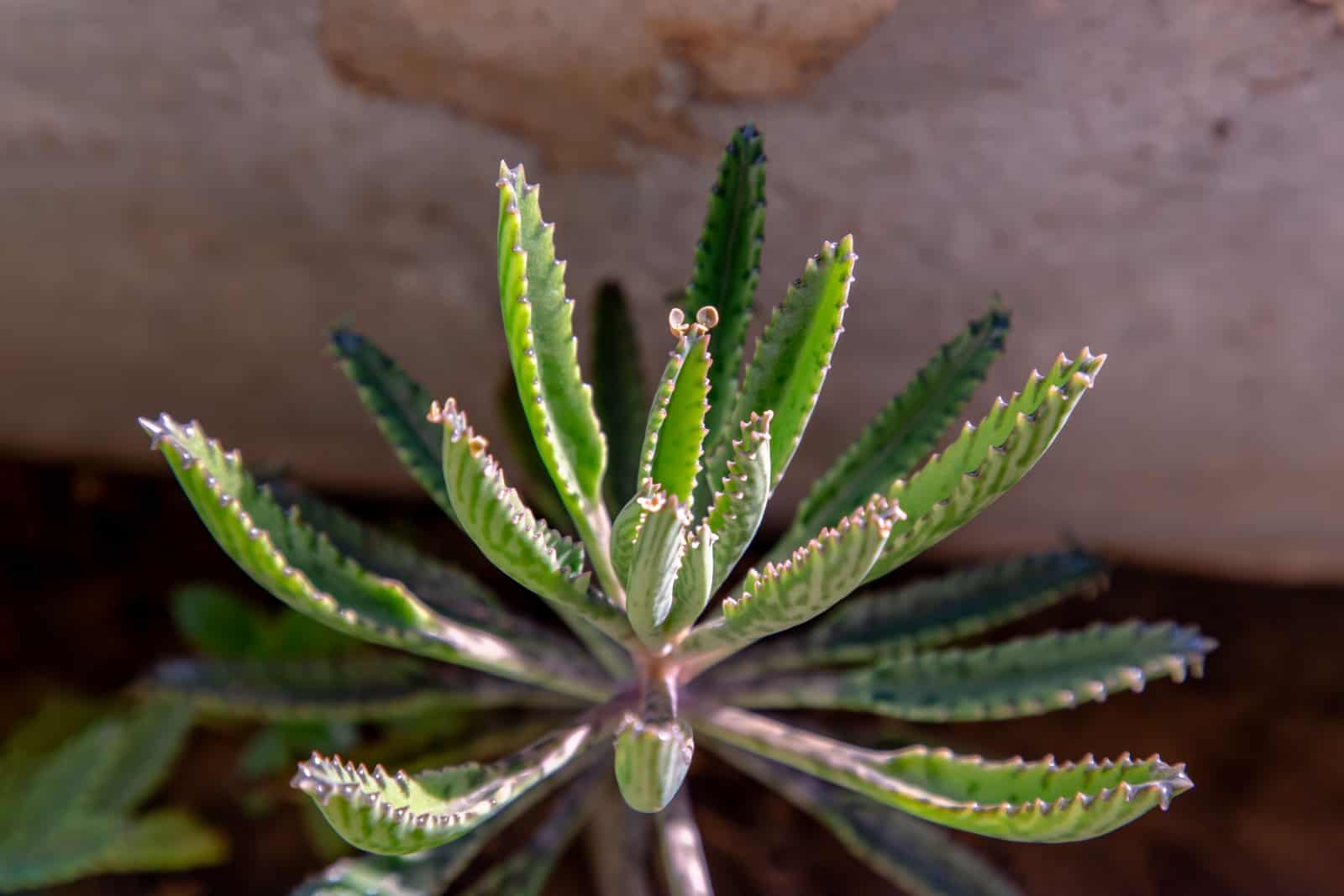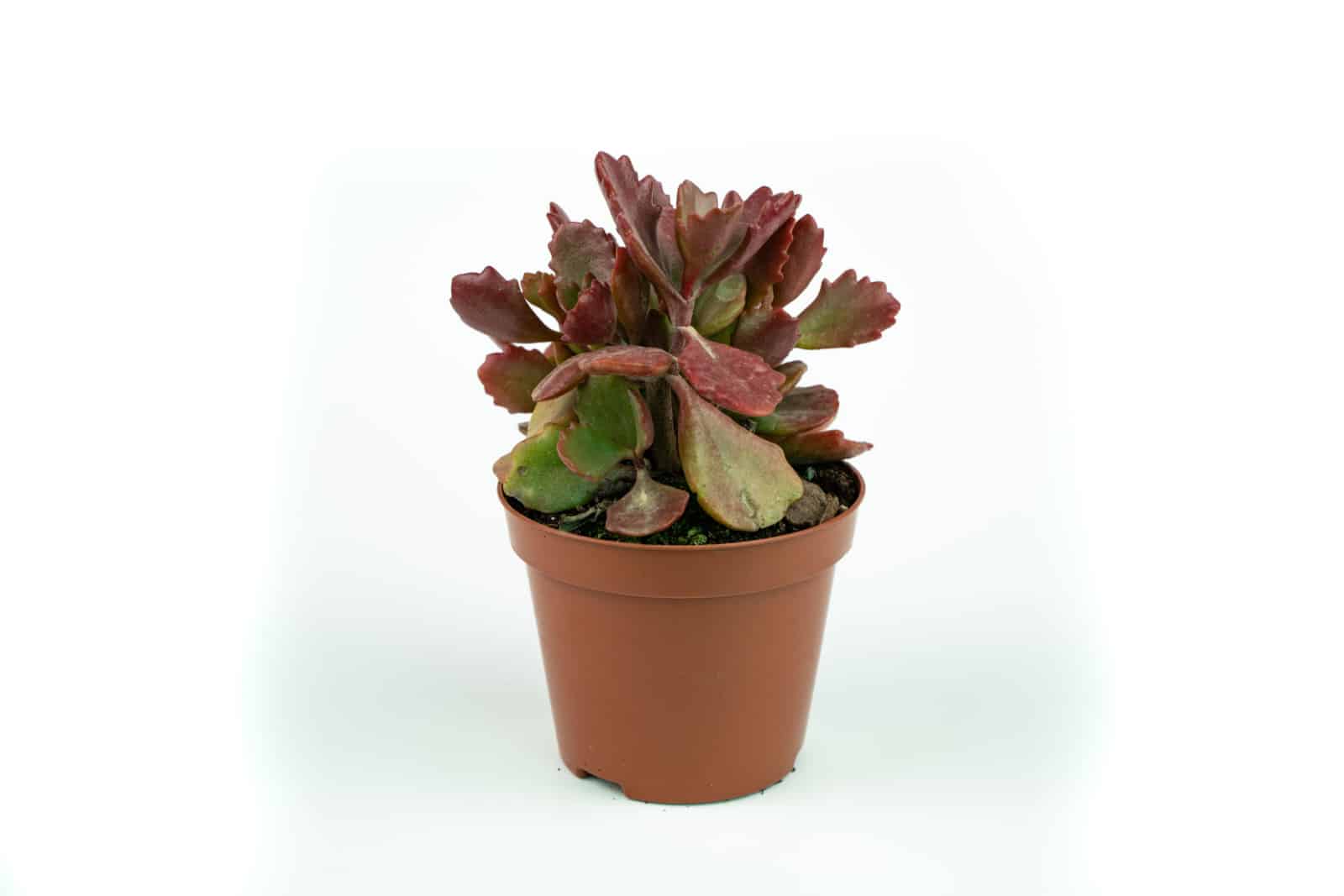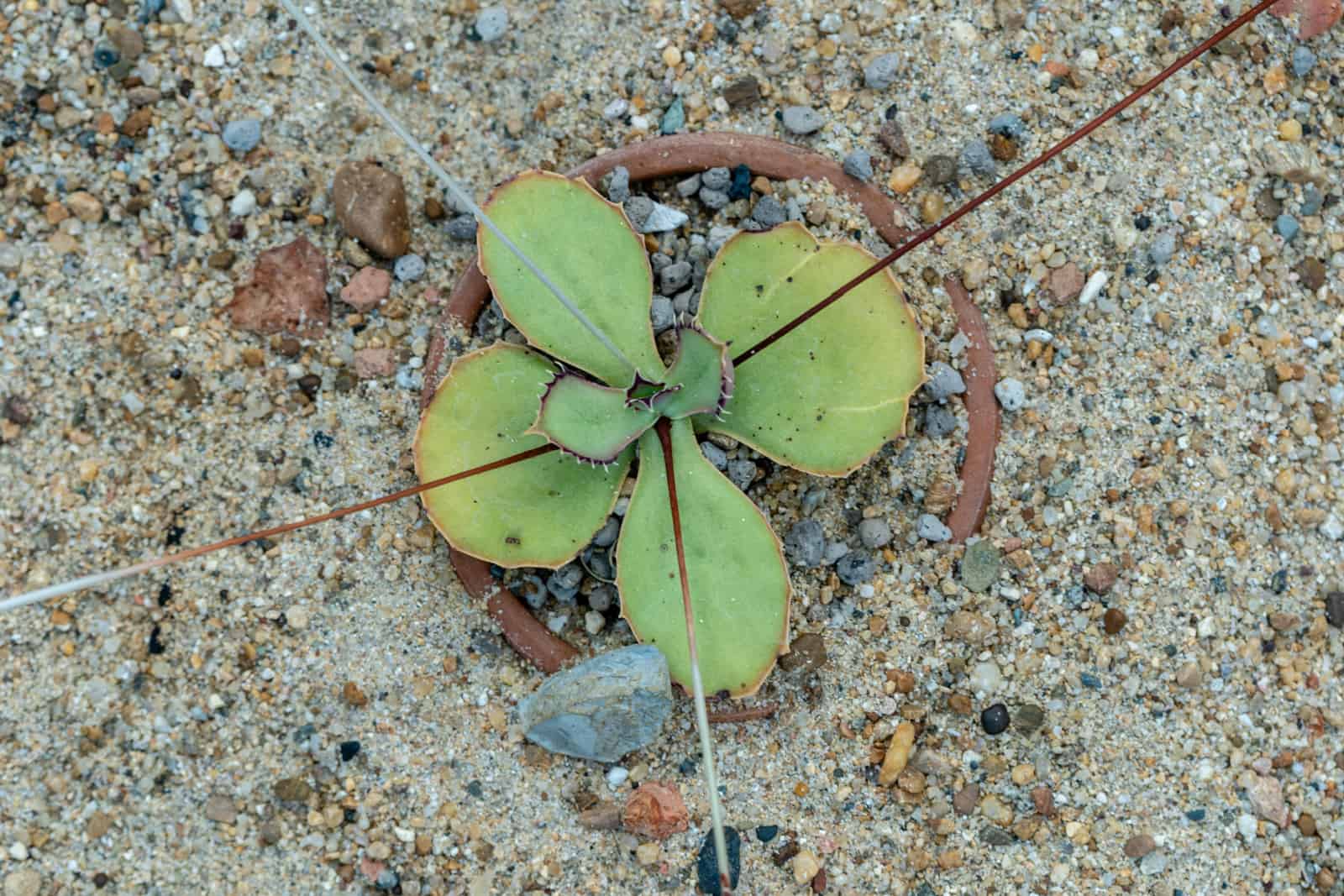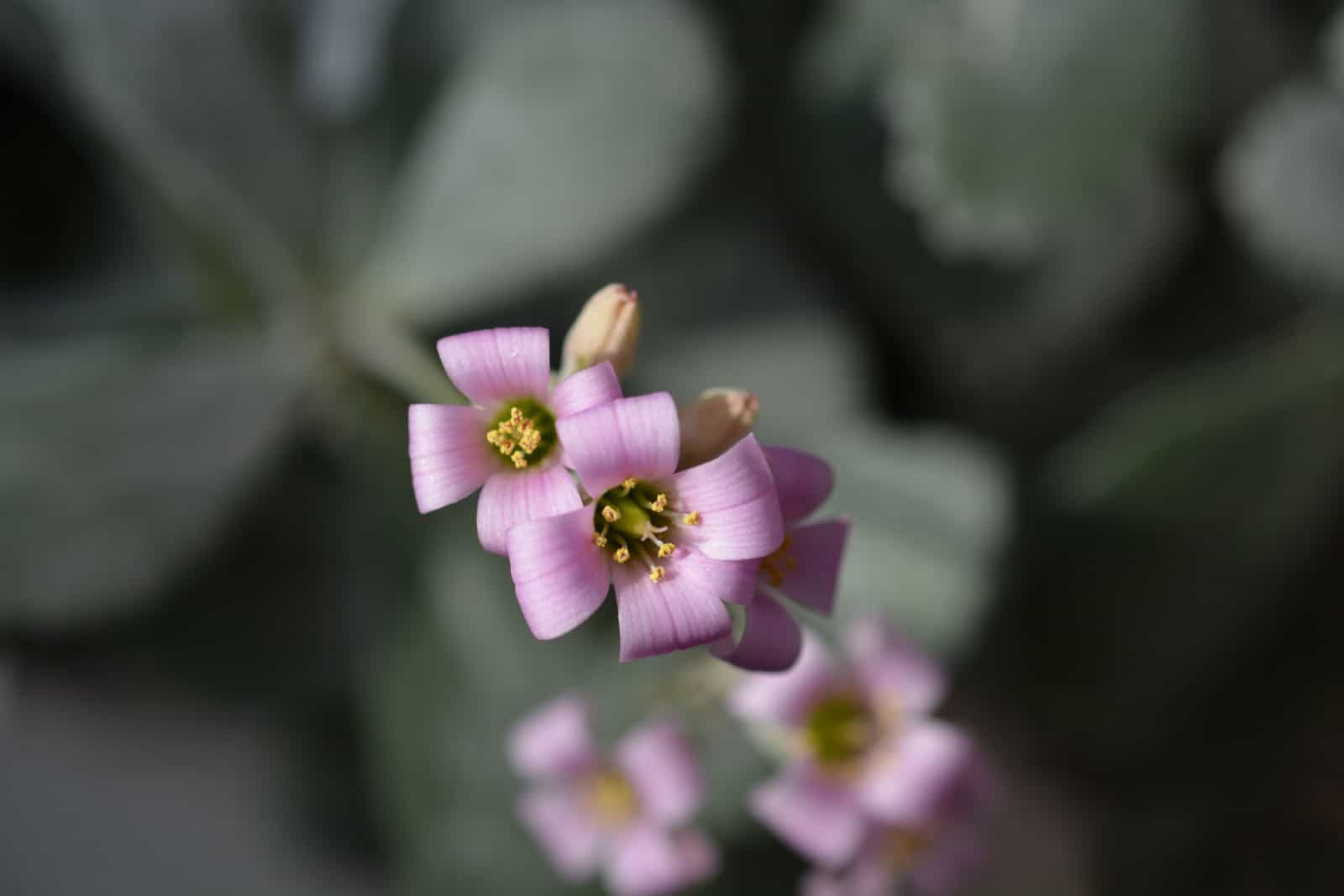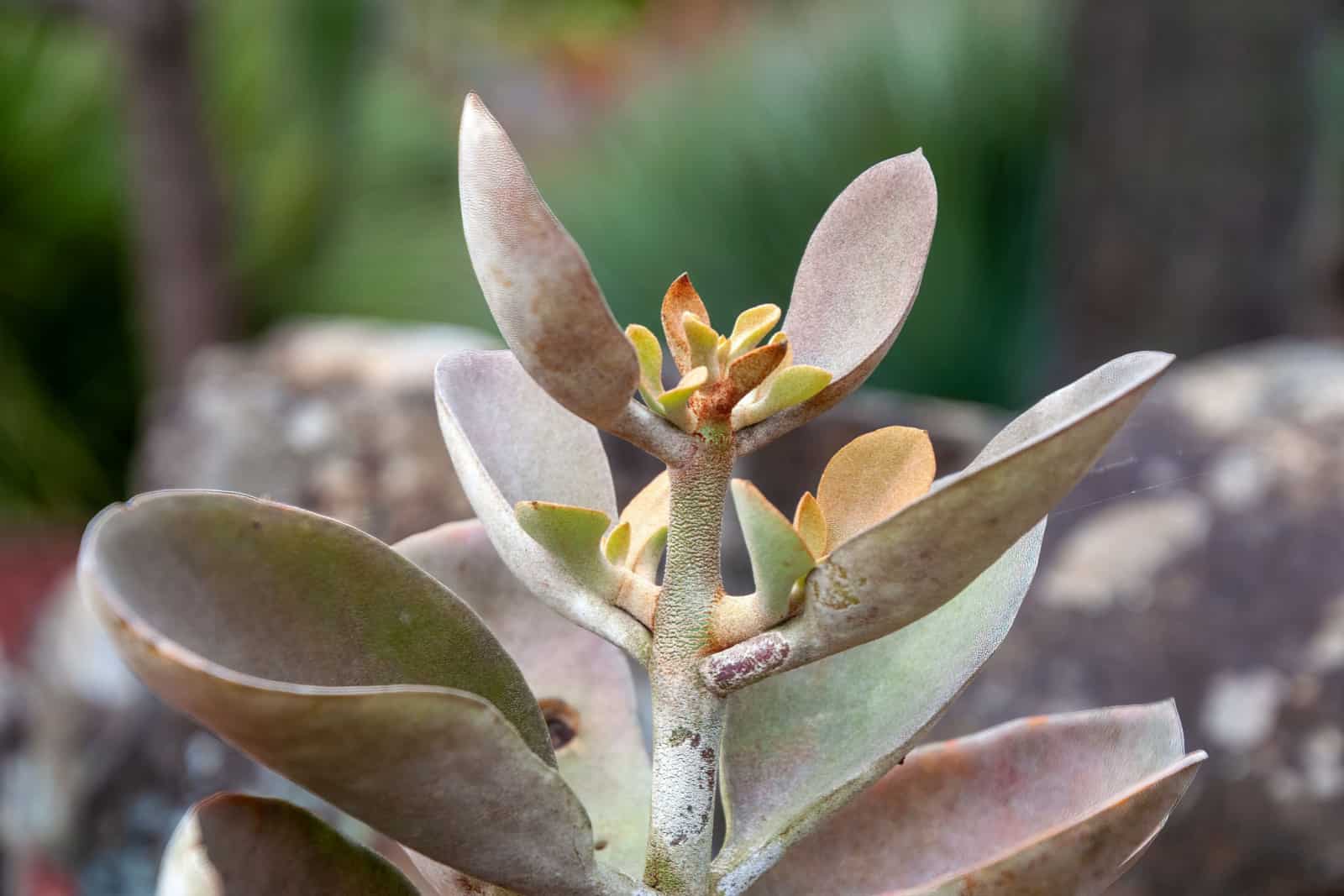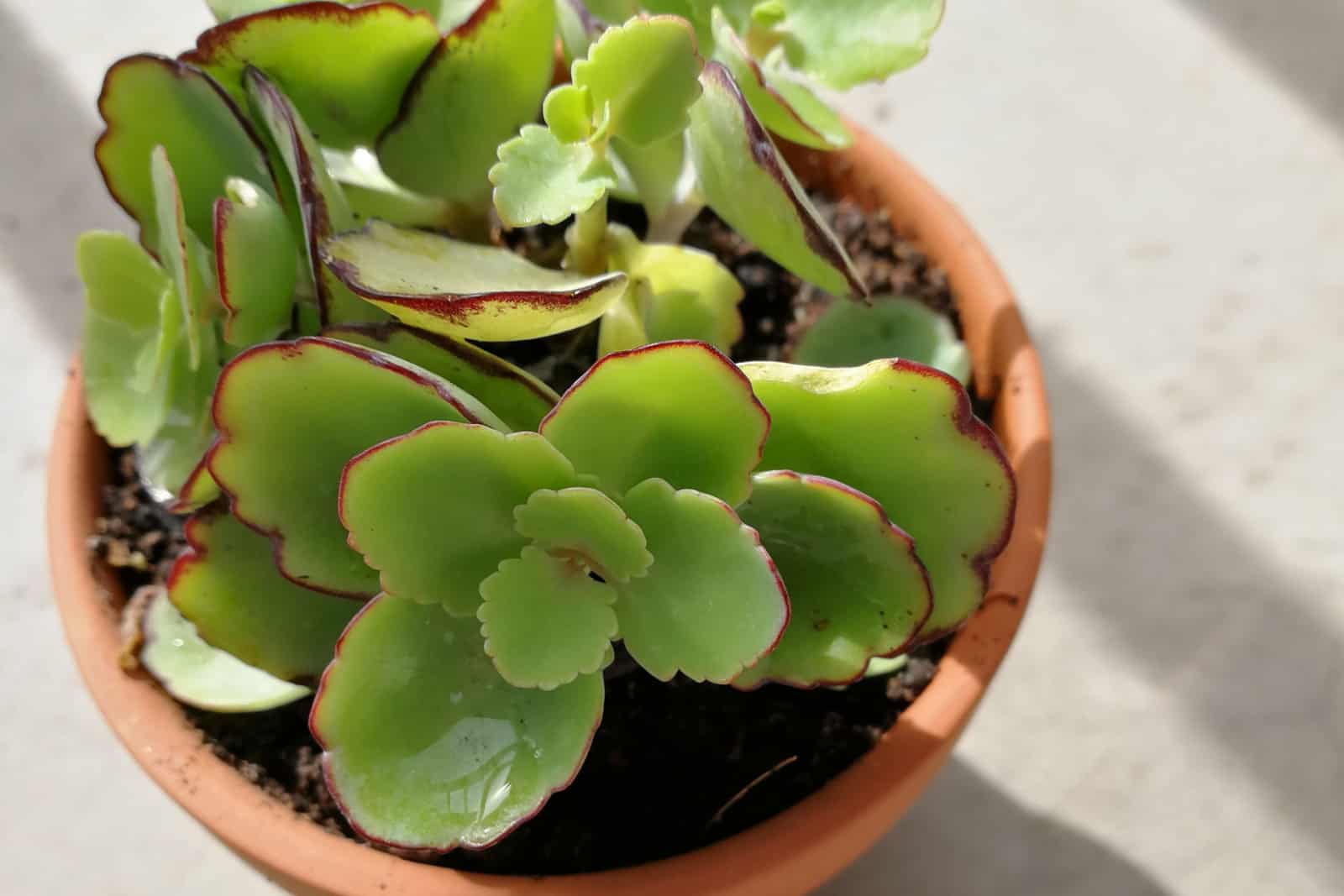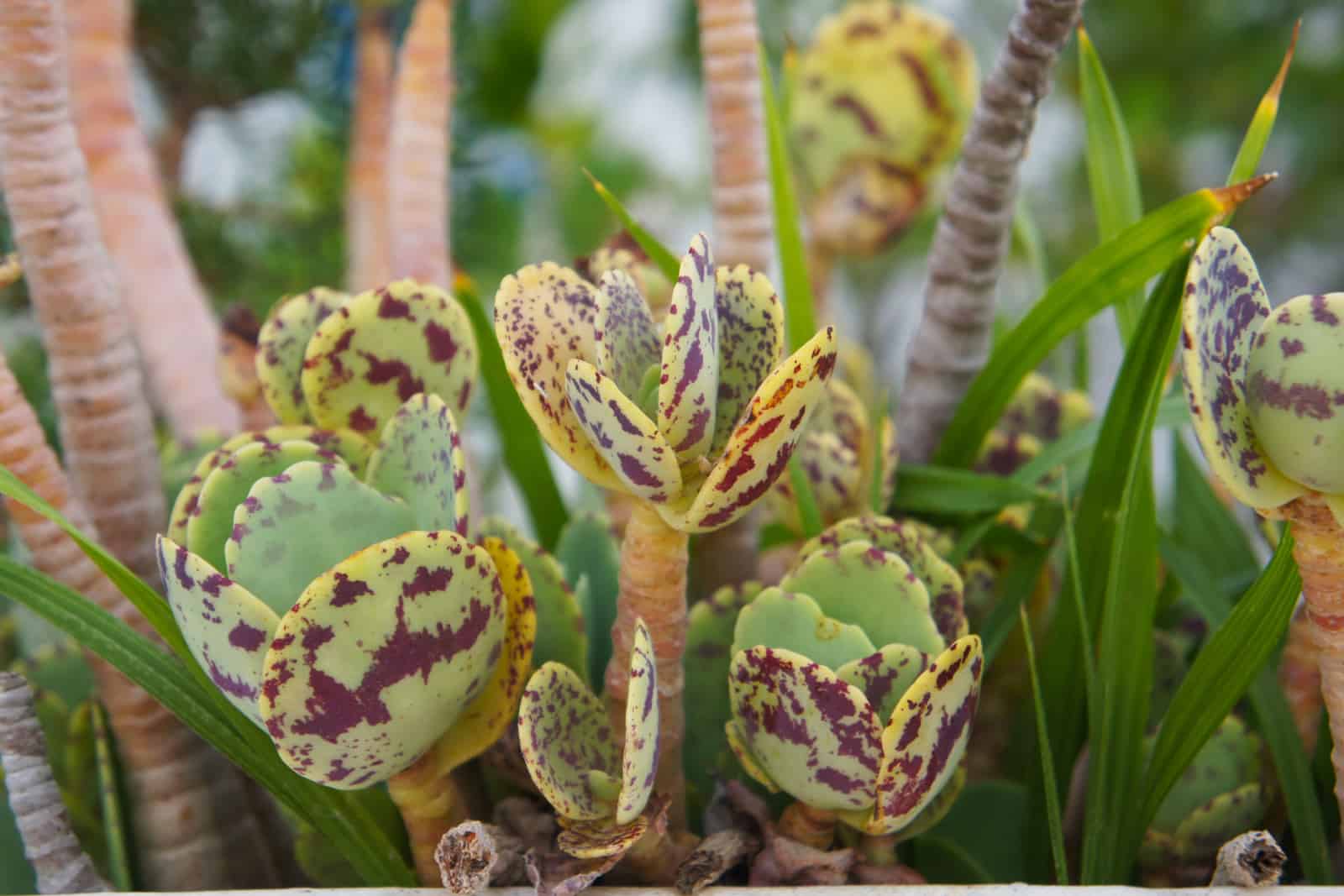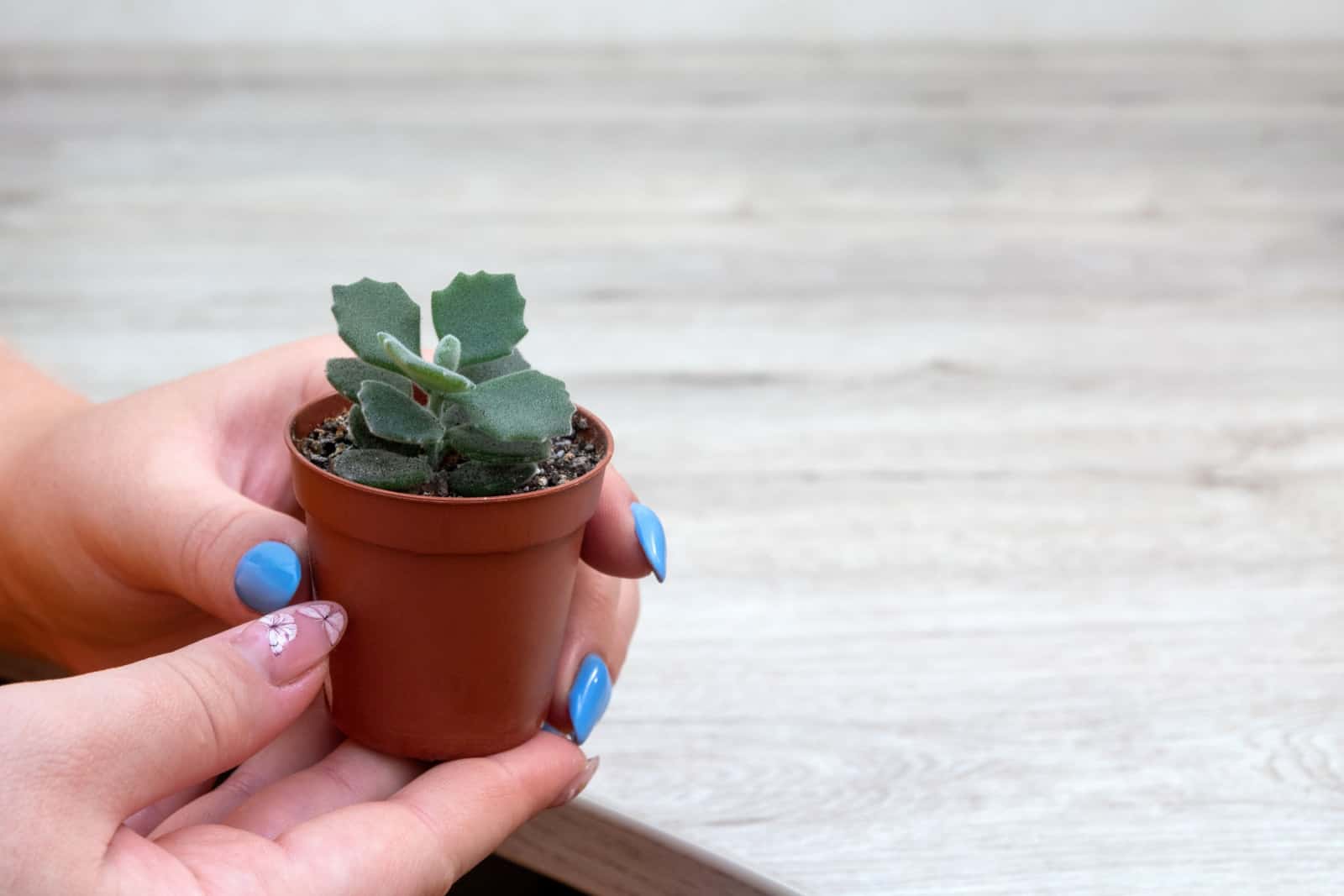If you love succulents, then you should definitely check out all these awesome Kalanchoe types!
Kalanchoe are small succulents that are relatively easy to grow. These little plants often exhibit oval-shaped green leaves with red margins. They also feature small clusters of flowers in pink, purple, white, or yellow.
These are hardy and drought-tolerant plants that can adapt to different growing conditions. Kalanchoe types can grow in full sun to partial shade. Warm temperatures, proper drainage, and some fertilization during the growing season will keep them happy.
Now, let’s take a closer look at some pretty Kalanchoe varieties!
1. Common Kalanchoe
Botanical name: Kalanchoe rotundifolia
Common names: Common Kalanchoe
Plant size: Up to 3.3 feet tall
Plant description: This small shrub-like plant produces lobed and fleshy green leaves with orange-pinkish backsides. If the plant is grown in full sun, the backsides might turn red. Lovely yellow flowers might grow through autumn and early winter.
Hardiness zones: 10b-11b
Plant care: Thrives in bright sunlight. Water moderately during fall and winter, and only once the soil feels dry. Minimum watering required during spring and summer. Prefers growing in well-draining soil.
2. Red Pancakes
Botanical name: Kalanchoe luciae
Common names: Red pancakes
Plant size: Up to 2 feet tall
Plant description: This drought-tolerant plant has unique, flat, paddle-like leaves that can turn almost completely red when exposed to direct sunlight. It also has tubular yellow flowers that grow quite tall (2-3 feet).
Hardiness zones: 9-12
Plant care: Low to moderate watering required. Let the soil completely dry out before watering, especially during hot weather. Can grow in both full sun and partial shade.
3. Pies From Heaven
Botanical name: Kalanchoe rhombopilosa var. viridifolia
Common names: Pies from heaven
Plant size: Up to 12 inches tall
Plant description: This slow-growing Kalanchoe variety produces triangular-shaped leaves that have dark green to brown leaves with silvery-white variegations. The plant produces lovely yellow, pink, and green flowers that have purple striations.
Hardiness zones: 10-11
Plant care: Thrives in well-draining soil. Requires full sun for proper growth. Too much direct sunlight exposure during hot summer days should be avoided. Use succulent fertilizer once a month during the growing season.
4. Silver Teaspoons
Botanical name: Kalanchoe bracteata
Common names: Silver teaspoons
Plant size: Up to 5 feet tall
Plant description: Multi-branched little succulent with slender, pointy leaves that have a silvery-green color. The plant has a shrubby appearance.
Hardiness zones: 10a-11b
Plant care: Can tolerate temperatures as low as 55°F. Thrives in well-draining and nutrient-rich soil. Drought-tolerant plant that requires moderate watering during summer. Watering should be reduced during the winter months. Susceptible to mealybugs and aphids.
5. Coral Bells
Botanical name: Kalanchoe uniflora
Common names: Coral bells
Plant size: 2-5 feet tall
Plant description: This is a trailing succulent that produces climbing stems that can grow about 3 feet long. Prominent, fleshy green leaves grow along these stems. As spring arrives, the plant begins flowering. Bell-shaped red and pink flowers give this plant a soft and dreamy appearance.
Hardiness zones: 10-11
Plant care: Low-maintenance plant that can grow in full sun to partial shade. Best grown in hanging baskets. The soil should be well-aerated and well-draining. Minimum to low watering. Thrives in temperatures between 65-70°F.
6. Tugela Cliff
Botanical name: Kalanchoe longiflora
Common names: Tugela cliff, Long-flower Kalanchoe
Plant size: Up to 16 inches tall
Plant description: This is a succulent shrub that produces fleshy and woody branches that grow upwards. Shell-shaped leaves have a bluish-gray-green color with pinkish edges. Yellow flowers grow during the late spring and summer period.
Hardiness zones: 10a-11b
Plant care: Requires full sun to partial shade. The plant should be kept away from too much direct sunlight during hot summer days. Moderate watering required during the growing season. Any regular potting soil mix will do. During the growing season, it should be fertilized once every two weeks using a liquid fertilizer or slow-release pellets.
7. Kalanchoe Wendy
Botanical name: Kalanchoe manginii ‘Wendy’
Common names: Kalanchoe Wendy
Plant size: Up to 12 inches tall
Plant description: The Kalanchoe Wendy is a semi-erect perennial succulent that produces characteristic green leaves and purplish-pink flowers. The leaves have an oval shape and uneven, shallow teeth. As soon as late winter or early spring approaches, bell-shaped purplish-pink flowers appear.
Hardiness zones: 10a-11b
Plant care: Grow it in areas with partial sun or light shade. Intense sunlight might burn the leaves. Moderate watering required. Let the soil dry out between waterings. Repotting required every few years.
8. Chandelier Plant
Botanical name: Kalanchoe daigremontiana
Common names: Chandelier plant, Mother of thousand, Kalanchoe chandelier, Devil’s backbone
Plant size: Up to 4 feet tall
Plant description: This Mother of thousand variety grows as a single stem with trailing tendrils. It reproduces via plantlets formed on the edges of the tiny green leaves. As soon as they touch the ground, they start rooting. This is why this Kalanchoe variety is considered invasive.
Hardiness zones: 10-11
Plant care: Hardy plant that thrives in different soil types. It can grow in full sun and partial shade, and is drought and heat tolerant.
9. Beauverd’s Widow’s-thrill
Botanical name: Kalanchoe beauverdii ‘Widow’s-thrill’
Common names: Beauverd’s Widow’s-thrill, Sotre-Sotry
Plant size: 3 feet long
Plant description: This succulent climber has branched, gray, wiry stems, and leaves with many readily caducous bulbils on the teeth, which range in color from green to dark purple. Shapes of the leaves might vary between linear, narrowly spatulate, hastate, elliptical, and oblong. In the winter and spring, flowers grow in clusters and range in color from pale green to gray-green with red-purple striations.
Hardiness zones: 9b-11b
Plant care: Thrives in warm and dry conditions. Prone to overwatering. The soil should be fully dry before watering the plant again. Fertilization required once a month during the growing season.
10. Kalanchoe Oricula
Botanical name: Kalanchoe luciae ‘Oricula’
Common names: Oricula
Plant size: Up to 2 feet tall
Plant description: This unique variety produces leaves that are green at the bottom and gradually turn red at the top. They also start to twist and curl inwards towards the end. Sometimes, especially in cold winter weather, the leaves can turn a bright red color. Small singular flowers appear in the winter.
Hardiness zones: 9a-11b
Plant care: This variety requires full sun to partial shade. It needs 6 hours of sunlight daily. Well-draining soil and some plant food during the growing season will encourage growth. Keep an eye on slugs and snails, which love munching on the curly leaves.
11. Mother Of Millions
Botanical name: Kalanchoe delagoensis
Common names: Mother of millions, Mission bells, Christmas bells
Plant size: Up to 3 feet tall
Plant description: The Mother of millions produces several stalks with narrow green leaves. The leaves grow from the same node. Tiny plantlets appear on the tips of the leaves. This is a fast-growing plant.
Hardiness zones: 9-11
Plant care: This variety thrives in temperatures between 60-85°F. It requires bright light for proper growth. If the leaves appear pale, it is often a sign that the plant needs more light. Well-draining soil and low to moderate watering are the ideal growing conditions.
Read also: Mother Of Millions vs Mother Of Thousands: Main Differences
12. Six Angled Kalanchoe
Botanical name: Kalanchoe sexangularis
Common names: Six Angled Kalanchoe, Red-leaved Kalanchoe
Plant size: Up to 3.3 feet tall
Plant description: The succulent subshrub produces a wide array of broadly elliptic to ovate, green to deep ruby-red leaves with severely scalloped margins. Tall, yellowish-green flowers are produced during the blooming period. The flowers can reach up to 12 inches tall.
Hardiness zones: 9a-11b
Plant care: Liquid fertilizer or slow-release pellets should be used during the growing season. The plant should grow in areas with full sun to partial shade. Minimum watering is also required.
13. Queen Jodie
Botanical name: Kalanchoe blossfeldiana ‘Queen Jodie’
Common names: Queen Jodie
Plant size: Up to 12 inches tall
Plant description: This small succulent produces rose-like flowers with a lovely pink-salmon color. The flowers appear during winter and spring. The plant also exhibits dark green leaves with waxy textures.
Hardiness zones: 10-12
Plant care: Thrives in well-draining, loamy, or sandy soil. Grows best in plenty of bright indirect sunlight. Prone to overwatering. Proper drainage is necessary. Pots or hanging baskets with drainage holes in the bottom are ideal for the Queen Jodie.
14. Walking Kalanchoe
Botanical name: Kalanchoe synsepala
Common names: Walking Kalanchoe, Cup Kalanchoe
Plant size: Up to 20 inches
Plant description: This succulent’s common name comes from the fact that the plant develops young plants at the tips of its tall stems, which gradually bend lower and take root. The plant has thick leaves with a green-grey color and purple margins. During the mid-fall period, tiny scarlet to soft pink flowers appear.
Hardiness zones: 9b-11b
Plant care: Prefers growing in dry conditions. Minimal watering required. Thrives in well-draining soil. Regular potting mix combined with sand can be used for a potted Kalanchoe. Keep it in full sun to partial shade.
15. Kalanchoe Elk Antlers
Botanical name: Kalanchoe ‘Elk Antlers’
Common names: Elk Antlers
Plant size: Up to 10 inches tall
Plant description: This succulent has antler-shaped leaves with a prominent green color. When exposed to direct sunlight, the edges of the leaves might turn maroon.
Hardiness zones: 10a-11b
Plant care: Grows best in full sun to partial shade. Proper drainage required to avoid overwatering. Repotting required every few years. Can be propagated through stem cuttings.
16. Kalanchoe Tessa
Botanical name: Kalanchoe ‘Tessa’
Common names: Tessa, Pendent Flowered Kalanchoe
Plant size: Up to 1 foot tall
Plant description: It is a hybrid succulent that bears flimsy, dangling stems with green foliage. Oval-shaped leaves might develop red markings when exposed to direct sun. From late winter to early spring, tubular orange flowers appear at the tips of the stems.
Plant care: Thrives in bright filtered light. Watering is required when the soil completely dries out. The plant should be fertilized only during the growing season. Prefers growing in well-draining soil.
17. Kalanchoe Pumila
Botanical name: Kalanchoe pumila
Common names: Flower Dust Plant
Plant size: Up to 12 inches tall
Plant description: A dwarf variety with a bushy appearance. The leaves have tiny white hairs on their surfaces that look like dust, hence the nickname. Tiny oblong leaves combine perfectly with trumpet-shaped purple flowers. The flowers are produced in late winter and early spring.
Hardiness zones: 9-11
Plant care: Thrives in full to partial sunlight. Succulent or cactus potting mix can be used for potted plants. Watering is required once the top few inches of the soil have dried out. Fertilization is not necessary, although plants might benefit from some plant food during the growing season.
18. Kalanchoe Orgyalis
Botanical name: Kalanchoe orgyalis
Common names: Copper spoon plant
Plant size: Up to 6 feet tall
Plant description: Slow-growing succulent that has specific bronze-colored leaves. These oval-shaped leaves also have a sandpaper-like texture. Bottom leaves might turn silver as the plant grows and matures. Clusters of yellow leaves appear from late winter to early spring.
Hardiness zones: 9-11
Plant care: At least 6 hours of direct sunlight required. Thrives in temperatures between 50-90°F. Requires humidity above 50%. The plant needs well-draining soil and some liquid fertilizer. Watering is only required when the soil dries out.
19. Kalanchoe Laxiflora
Botanical name: Kalanchoe laxiflora
Common names: Milky Widow’s Thrill
Plant size: Around 20 inches tall
Plant description: This low-maintenance succulent has bright green leaves that turn gray or white as the plant matures. The leaves also have prominent red margins. Bell-shaped flowers with a coral orange color might be produced during the flowering phase.
Hardiness zones: 9-11
Plant care: Grows best in coarse, sand, cacti-based, and well-draining soils. Requires bright sunlight. The plant should not be exposed to intense sunlight during hot summer days. Prefers temperatures from 61-80°F. Let the soil dry out before watering it again.
20. Kalanchoe Marmorata
Botanical name: Kalanchoe marmorata
Common names: Spotted Kalanchoe, Penwiper plant
Plant size: Up to 4.3 feet tall
Plant description: This variety features erect stems that bear lovely gray-green leaves with purple variegations. The leaf margins might be whole, undulating, crenate, or serrated. From early spring to early winter, long white to greenish flowers start growing. These flowers are star-shaped.
Hardiness zones: 10b-11b
Plant care: Grows best next to a sunny window. The plant should be watered when the soil dries out. Proper drainage required to avoid overwatering.
21. Kalanchoe Millotii
Botanical name: Kalanchoe millotii
Common names: Millot Kalanchoe
Plant size: Up to 12 inches tall
Plant description: Small shrub succulent that features soft green leaves with ovate shapes. The leaves are covered in tiny white hairs, which give them a rough texture. In summer, clusters of small yellow flowers are produced.
Hardiness zones: 10b-11b
Plant care: Lots of sunlight is required, but the plant should be kept away from direct sunlight exposure during summer. The Millotii thrives in moderate humidity and warm temperatures. Fertilization is only required during the growing season. Let the topsoil dry out before watering.
To Sum Up
Now that you have seen some of the prettiest Kalanchoe types, I’m sure that you found something that suits your personal style.
These lovely little succulent plants are everyone’s favorite!
As well as their aesthetic appearance, they are also so easy to take care of, which is why beginner gardeners absolutely love them. Just put them somewhere sunny, make sure to give them water from time to time, and that’s it!
I hope this article was helpful.
Until next time!

